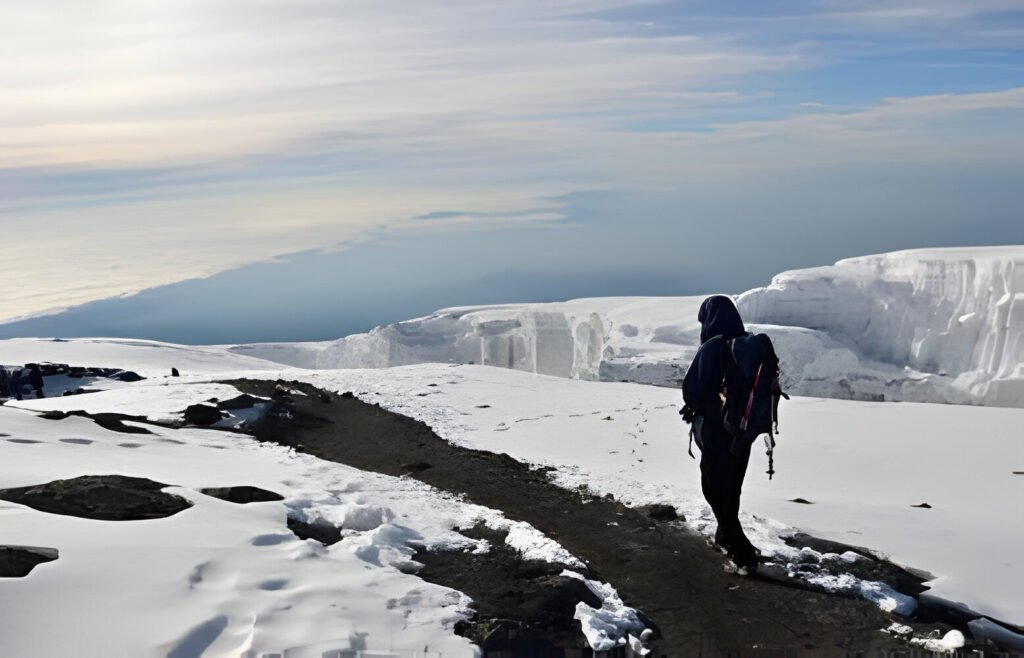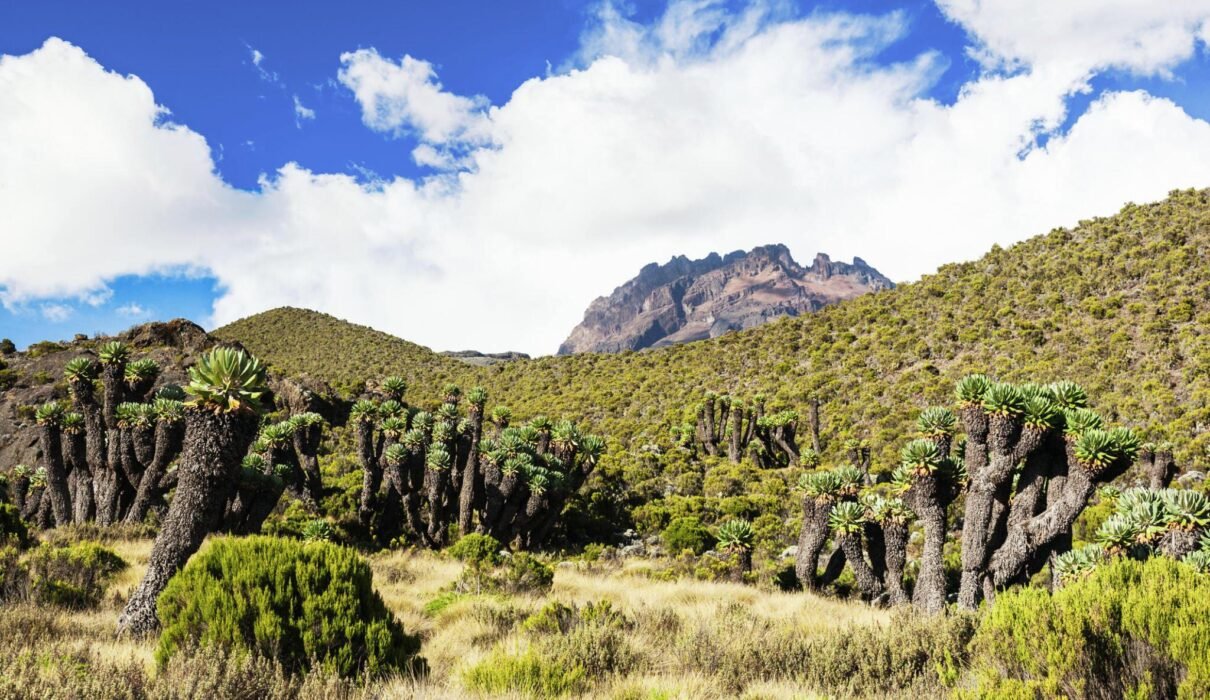How Much Does It Cost to Climb Kilimanjaro? Complete 2025 Guide. Climbing Mount Kilimanjaro, Africa’s highest peak, is a life-changing experience. But before you set off on this thrilling adventure, it’s essential to understand the costs involved. Climbing Kilimanjaro requires budgeting for several factors, including park fees, tour operator services, gear, and tipping for guides and porters. This guide will break down everything you need to know about how much it costs to climb Kilimanjaro, helping you plan your budget effectively.

How Much Does It Cost to Climb Kilimanjaro : What Influences the Cost of Climbing Kilimanjaro?
Several components affect the overall cost of climbing Mount Kilimanjaro. Here’s a breakdown of the major factors:
1. Kilimanjaro National Park Fees
The Tanzanian government has set fixed fees to help maintain the park and its resources. These fees make up a large portion of your total cost. Here are the key park fees:
- Conservation Fees: Approximately $70 per person per day.
- Camping Fees: Around $50 to $60 per night (or hut fees on Marangu Route).
- Rescue Fees: A flat fee of about $20 per person.
- Crater Camp Fee (optional): A higher camping fee applies if you camp near the summit.
These mandatory fees ensure the park remains protected for future generations.
Read more about park fees with Kilimanjaro Climb Specialist
How Much Does It Cost to Climb Kilimanjaro : 2. Tour Operator Costs
Choosing the right tour operator is crucial, and costs can vary significantly based on the services provided. A reputable tour operator covers your accommodation, food, water, park fees, and the salary for your guides and porters. While cheaper options are available, they may compromise on safety, guide expertise, or equipment quality.
Tour operators charge anywhere from $1,500 to $5,000 depending on:
- Route Length: Longer routes like Lemosho and Northern Circuit cost more due to extra days and better acclimatization.
- Level of Service: Luxury treks with added perks like private toilets or upgraded meals will cost more.
- Group Size: Private tours are more expensive compared to larger group treks.
Find more options with Eddy Tours Safaris
3. Climbing Routes and Duration
The route you choose will affect the overall cost. Longer routes not only increase the number of days but also offer better acclimatization and higher success rates.
- Marangu Route (5-6 days): This is one of the most budget-friendly options, with accommodation in huts. Expect to pay between $1,500 to $2,500.
- Machame Route (6-7 days): Known as the Whiskey Route, it is more scenic and offers better acclimatization. Costs range from $2,000 to $3,500.
- Lemosho Route (7-8 days): A longer and more scenic route, prices range from $2,500 to $4,500.
- Northern Circuit Route (9-10 days): This is the longest and most remote route, costing up to $5,000 due to the extended duration and exclusivity.
Explore a variety of Kilimanjaro routes
4. Personal Gear and Equipment
You will need the proper gear for your trek, and while some operators offer rentals, many climbers prefer to bring their own equipment. Essential items include:
- Hiking Boots: $150-$300 for high-quality, waterproof boots.
- Layered Clothing: Including base layers, mid-layers, and a waterproof outer shell. This could total $300 to $600.
- Sleeping Bag: A sub-zero rated sleeping bag can cost $100 to $200.
- Backpack and Poles: A good backpack and trekking poles can cost around $100 to $150.
Renting gear locally is an option, though it might not always meet the same standards as personal equipment.
Check out a detailed Kilimanjaro packing guide
5. Tipping for Guides and Porters (Not Compulsory)
Tipping is a standard practice when climbing Kilimanjaro, as it supports the hard work of the guides, porters, and cooks who ensure a successful trek. The recommended tipping amount is around $250 to $300 per climber for a week-long trek.
A typical tip breakdown is:
- Lead Guide: $20 per day
- Assistant Guide: $15 per day
- Cook: $10 per day
- Porters: $8 per day
Tipping is usually handled collectively, and at the end of the climb, the amount is shared among the team.
Learn more about tipping customs on Kilimanjaro
6. Visa and Travel Insurance
In addition to the costs for the climb itself, you will also need to budget for:
- Visa: Most travelers require a visa to enter Tanzania, which costs approximately $50 to $100.
- Travel Insurance: Insurance that covers high-altitude trekking and emergency evacuation is essential. This typically costs around $100 to $200, depending on the coverage.
Find more information on Tanzanian visas
7. Vaccinations and Medications
To enter Tanzania, travelers may be required to have certain vaccinations, such as Yellow Fever, depending on the country of origin. It’s also highly recommended to take anti-malarial medication, especially if you plan on visiting lower altitudes or nearby regions such as Serengeti or Ngorongoro Crater. Vaccinations and medications can cost between $50 to $200 depending on your healthcare provider and insurance coverage.
Learn more about health precautions for Kilimanjaro

How Much Does It Cost to Climb Kilimanjaro? Complete 2025 Guide : Cost-Saving Tips for Climbing Kilimanjaro
While climbing Kilimanjaro can be costly, there are ways to manage expenses without compromising safety or experience:
- Book with a Reputable Operator: Avoid overly cheap options as they may cut corners, risking your safety.
- Travel in a Group: Group climbs are more cost-effective than private tours, as costs are shared.
- Rent Gear Locally: If you’re only climbing Kilimanjaro once, renting gear can save you from purchasing expensive equipment.
- Choose a Shorter Route: Routes like Marangu are more budget-friendly, though they offer less acclimatization time.
Find more cost-saving tips for your Kilimanjaro trek
How Much Does It Cost to Climb Kilimanjaro? Complete 2025 Guide : Frequently Asked Questions
1. How much should I budget to climb Kilimanjaro?
Budget between $1,000 to $5,000 depending on the route, level of service, and gear requirements.
2. What’s the cheapest route to climb Kilimanjaro?
The Marangu Route is generally the most affordable, costing between $1,000 to $2,500.
3. Do I need travel insurance to climb Kilimanjaro?
Yes, travel insurance that covers high-altitude trekking and emergency evacuation is highly recommended for safety.
4. Are there any hidden costs?
Additional costs can include visas, vaccinations, tipping, and gear rentals, which can add a few hundred dollars to your budget.
Find more FAQs about Kilimanjaro costs
How Much Does It Cost to Climb Kilimanjaro? Complete 2025 Guide : Plan Your Kilimanjaro Adventure Today
Understanding how much it costs to climb Kilimanjaro is the first step in planning your adventure. From mandatory park fees to tipping and gear, it’s important to budget thoroughly to ensure a smooth and successful trek. Whether you’re choosing the scenic Lemosho Route or the shorter Marangu Route, the investment in this once-in-a-lifetime experience is worth every penny.
Start planning your Kilimanjaro climb with Kilimanjaro Climb Specialist
Explore your options with Eddy Tours Safaris

